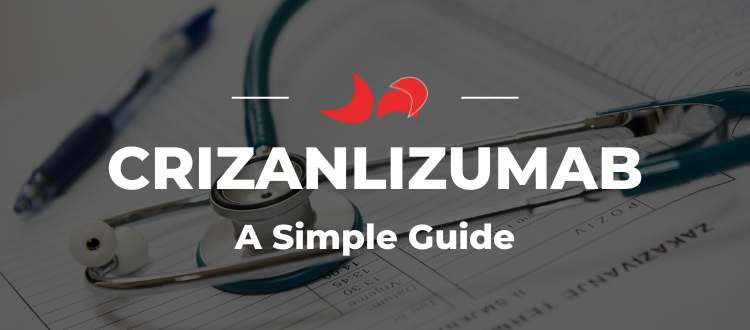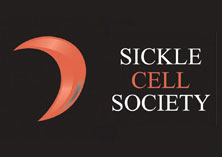Crizanlizumab – A Simple Guide
Home » Crizanlizumab – A Simple Guide

Crizanlizumab – A Simple Guide
This page contains a simple overview of a new sickle cell treatment, crizanlizumab (brand name Adakveo®), and the Managed Access Agreement. We will continue to update and change this page as more information becomes available.
Managed Access Agreement
What is Crizanlizumab?
Crizanlizumab is a treatment injected into the vein (intravenous, or IV) that people with sickle cell can take on its own or alongside hydroxycarbamide (also known as hydroxyurea), to prevent episodes of pain and some other complications in people with sickle cell.
Crizanlizumab is the first new treatment (the first in over 20 years) for people living with sickle cell, available on the NHS through a Managed Access Agreement (more on this below).
The National Institute for Health and Care Excellence (NICE) has recommended crizanlizumab for patients who have been diagnosed with sickle cell disease subject to the terms of the Managed Access Agreement (MAA) which is available to read here: https://www.nice.org.uk/guidance/gid-ta10470/documents/committee-papers-3.
When will Crizanlizumab be accessible?
Access to NHS-funded crizanlizumab will be available to patients from 1st February 2022.

How can I get access to this treatment?
If you are interested in finding out more information about crizanlizumab, whether it could be beneficial for you and how to start the treatment, you can speak to a member of the clinical team at your hospital or haemoglobinopathy centre. This discussion should provide you with the information you need to know about what treatment with crizanlizumab involves, the likely benefits of treatment, any side effects, and how data collected about your treatment will be used.
There are 23 specialist haemoglobinopathy teams (SHTs) in England and all patients with sickle cell disease should be reviewed from doctors from the SHT at least once a year. If you are not sure where your specialist haemoglobinopathy team is located then please discuss with your haematology or sickle team. You can find the list of SHTs here https://www.england.nhs.uk/commissioning/spec-services/npc-crg/blood-and-infection-group-f/f05/specialised-haemoglobinopathy-services/
Am I eligible for this treatment?
To be eligible to receive treatment with crizanlizumab via the managed access agreement, you must:
- have a confirmed diagnosis of sickle cell disease, and
- be aged 16 and over and had 2 or more confirmed sickle cell crises (vaso-occlusive crises or VOC) in the previous 12 months. (A sickle cell crisis is an acute painful episode that requires pain relief medication to manage at home or in hospital),
- be assessed by a member of the specialist team responsible for your care who can present your case to the regional multi-disciplinary team for review.
These criteria and the review by the multi-disciplinary team are standard within the NHS to identify patients who are most likely to benefit from treatment and to ensure fairness for patients in all of the country.
Crizanlizumab can only be used according to the restrictions outlined in the license.
How often will I need to attend hospital for treatment?
Crizanlizumab is given by infusion (a drip) into a vein every four weeks (apart from the first two infusions which are given two weeks apart). The initial prescription will be from a doctor experienced in treating sickle cell disease at a specialist treatment centre. It will usually be given on a haematology or medical day unit, by specialist nursing staff who are used to giving outpatient infusion treatments. The infusion takes thirty minutes to administer and you will need to stay on the day unit for at least an hour after the first two infusions so you can be observed.

What are the potential side effects of treatment with crizanlizumab?
The most common side effects with crizanlizumab (which may affect more than 1 in 10 people) are joint pain, nausea, back pain, fever and abdominal (belly) pain. Less common side effects (which may affect between 1 in 10 and 1 in 100 people include severe joint pain or fever, headache, nausea, diarrhoea, vomiting, itch, chest pain, muscle pain and tiredness and infusion site reactions.
The infusion site reaction includes pain and bruising at the infusion site. Less than 2 in 100 people have an infusion related reaction which may include a rash, hives, itch, flushing, redness of the skin, swelling of the throat and mouth, difficulty breathing and in rare cases anaphylaxis.
The Managed Access Agreement for crizanlizumab for sickle cell disease
The Managed Access Agreement between NHS England and Novartis (the drug manufacturer) enables patients to receive NHS funded treatment with crizanlizumab while further information is gathered to strengthen the clinical evidence.

NICE will re-evaluate crizanlizumab once this new evidence is available and make a final recommendation about whether it should be funded for routine NHS use. The review is anticipated to be in 2025.
NICE makes recommendation about new NHS-funded treatments based on evidence about the benefits to patients and whether the cost to the NHS reflect good value (measured as cost-effectiveness). Sometimes the evidence available to NICE is very limited, or it only relates to some patients with a condition and not others, or important information about clinical benefits is missing.
NICE committees make recommendations for new treatments for NHS funded use, or not. However, for treatments with promising potential but with limited evidence, NICE committees can make a recommendation for use with managed access, if they think the uncertainties in the evidence are too great to make a final decision about use via the NHS, but where these could be addressed through further data collection.
When NICE makes a recommendation for use with managed access, NHS England and the drug manufacturer are asked to agree how patients could have access to NHS funded treatment (this is a commercial access agreement), while NICE works with the company, NHS or other database controllers, clinicians and patient groups to make sure the new evidence required is able to be collected (this is a data collection agreement). If all of this can be agreed, a Managed Access Agreement is put in place for a time limited period. If a Managed Access Agreement can not be put in place, NICE would issue a recommendation that the new treatment should not be used in the NHS.
So, a Managed Access Agreement enables patient access to treatment for a time limited period while further evidence is collected. At the end of the Managed Access Agreement NICE evaluates the treatment again, with all new evidence that has become available. After a Managed Access Agreement, NICE can only make a recommendation for either routine use or not. There is no option for further access via managed access at this point.
Therefore, the purpose of the Managed Access Agreement is to enable data to be collected on patients receiving treatment on the NHS and to review whether patients benefit from the drug. However, here is no guarantee that the medicine will be recommended for routine use in the NHS when it is reviewed by NICE at the end of the managed access period – this will depend on the evidence available at the time.

Why did NICE recommend crizanlizumab for use with managed access?
The evidence suggests that people taking crizanlizumab have fewer episodes of pain caused by sickle cell compared to those not taking it with or without hydroxycarbamide. However, because the trial was short and included only a small number of people on the licensed dose of the drug, the long-term benefits are uncertain.
Who is involved in a Managed Access Agreement?
The Managed Access Agreement for crizanlizumab is a formal document agreed between NHS England and Novartis Pharmaceuticals UK Ltd (the drug manufacturer).
Within the Managed Access Agreement there is a Data Collection Agreement which will be overseen by a collaborative group, facilitated by NICE, which will include representatives from:
- Novartis Pharmaceuticals UK Ltd – the manufacturer
- National Haemoglobinopathy Registry (NHR) – the data registry
- NHS England – who ensure NHS treatment centres are able to offer treatment
- Doctors who are experts in treating sickle cell disease
- Patient organisations including the Sickle Cell Society and the Anthonia Oyindamola Folakemi Afelumo Coshare (AOFAC) Foundation)
This group will meet regularly to:
- Oversee the operation of all aspects of the MAA and to address issues that may arise from time to time.
What is the purpose of the Managed Access Agreement?
The purpose of the MAA is to:
- Enable patients to access crizanlizumab for a time limited period.
- Collect data on NHS patients to address the uncertainties in then evidence that were identified when the drug was originally evaluated by NICE.
- Provide new evidence to NICE at the end of the agreement to make new recommendation about whether crizanlizumab should be available to patients on the NHS.
What data will be collected about my treatment?
Information will be collected during the MAA to assess the effectiveness of crizanlizumab and contribute to evidence that will be reviewed by NICE at the end of the MAA period.
When you go for your treatment, the healthcare team responsible for your treatment will keep a record of information about your treatment and collect data about whether you experience episodes of acute pain needing pain relief at home and in the hospital (vaso-occlusive crises – VOCs). Your healthcare team will record:
- your age
- your sex
- weight (to calculate the right dose for you)
Your healthcare team will record information annually about whether you received hydroxycarbamide (also known as hydroxyurea) in the previous 12 months. Additionally the registry team will collect information from existing NHS data collections about the frequency of any acute pain episodes/VOCs that you experienced at home or in hospital while receiving treatment, how long you were in hospital and outpatient appointments associated with these events.
Why is my data needed?
Data collection is a vital part of the MAA and this information will be used to make long term decisions on the future availability of crizanlizumab. It is really important that patients and their families/care givers attend hospital appointments to make sure there is enough data for the treatment to be assessed properly.

What happens at the end of the data collection period?
At the end of the data collection period, in 2025, Novartis make a new evidence submission to NICE so the clinical and cost effectiveness of crizanlizumab can be evaluated again. This evaluation will include the data that has been collected from NHS patients throughout the data collection period as well as data from ongoing clinical trials.
Patient groups, patients and clinicians can also contribute to this evaluation and make a submission. This evaluation will take place according to NICE’s processes and methods in place at the time of the evaluation.
Funding for treatment via the MAA covers the period of the re-evaluation, meaning that any patients that have started crizanlizumab as part of the MAA, can continue to do so whilst the final decision is being made.
NICE will consider both the clinical and cost effectiveness of crizanlizumab and make a final decision on whether crizanlizumab should continue to be funded on the NHS after the MAA has expired.
If at this time NICE reviews the evidence that has been collected on crizanlizumab and recommends crizanlizumab for NHS funding:
- then NHS England and the company will need to make a new agreement for ongoing funding. This means that if NICE recommends crizanlizumab for NHS funding that your treatment will continue.
If at this time NICE reviews the evidence that has been collected on crizanlizumab and no longer recommends crizanlizumab for NHS funding:
- then all NHS England funding will stop and NHS England will agree with the company how treatment for existing patients might continue. This means that if NICE no longer recommends crizanlizumab for NHS funding or makes no recommendation, your treatment with crizanlizumab may stop regardless of whether you are doing well on treatment or not. No new patients would be able to start treatment. In this scenario all patients would have a discussion with their clinical team regarding the most appropriate NHS standard of care treatment.
